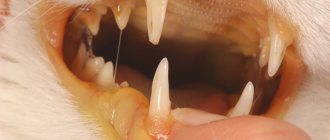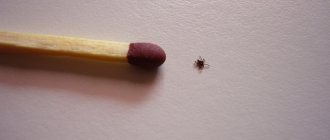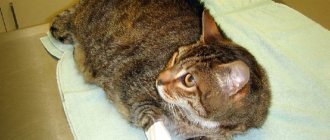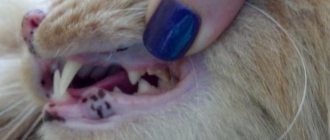4206Pavel
Often, owners of domestic cats associate the word parasite with helminths. In fact, protozoa can cause more serious harm to a cat’s health. The symptoms and treatment of protozoa in cats have been well studied, and we will talk about this today in this article.
Protozoa in cats are represented by unicellular and colonial organisms that lead a parasitic lifestyle in the animal’s body. These protozoa cause diseases that have another name - protozoal infections. The most common of them:
- amoebic dysentery or amoebiasis;
- toxoplasmosis;
- trematodes;
- isosporosis;
- coccidiosis;
- Giardiasis, better known as giardiasis.
© shutterstock
How does protozoa infection occur?
A cat can become infected after eating food or water contaminated with parasite spores. Another route of transmission is the bites of blood-sucking insects. At risk are kittens that still have weak immunity and animals that have recently undergone illness or surgery; they also still have weak immunity. Protozoa in cats are also dangerous for humans. Therefore, when treating pets for protozoa and disinfecting the premises, certain safety rules must be followed. This is especially important if there are children or elderly people in the house. In this case, the sick animal will need to be isolated.
Routes of transmission of protozoal infections
Let's take a closer look at the methods of transmission of giardiasis. Today, the “classical” and most common are three cases:
- Drinking water contaminated with parasite cysts . This often happens with “rural” cats, who from time to time quench their thirst from roadside puddles.
- It happens that a cat becomes infected simply by sniffing a sick relative. There are a lot of parasite cysts on the fur of sick cats, so there is nothing strange about this.
- Finally, an animal may well become infected simply by licking itself. This happens for the same reason that was stated above.
As we have already said, babesiosis is transmitted by the bites of blood-sucking ixodid ticks, but in practice there are more routes of infection:
- There have been cases of transmission of infection during fights when cats bite each other.
- The intrauterine route of infection is common, when already infected kittens are born to a sick mother.
- In foreign veterinary periodicals you can read that cats became infected through the transfusion of “bad” blood, but this method is not relevant for us.
Finally, we need to tell you how Toxoplasma infection occurs:
- Eating food or drinking water that contains protozoan organisms.
- As in the previous case, intrauterine infection is very likely, since the parasite easily overcomes the placental barrier.
- Blood transfusion. Again, this is not relevant for us.
- A cat may eat an infected mouse, or be bitten by an infected animal during a fight.
- Infection is possible through pork that has not been subjected to heat treatment.
- Finally, flies and other insects can be mechanical vectors of infection. If they have landed on the feces of a sick animal at least once, the parasite will probably remain on the fur of the pet on whose fur the fly sat.
Amoebic dysentery
The amoeba Entamoeba histolytica, entering the cat's body, causes disease. The main symptom is prolonged diarrhea. As a result, inflammation of the colon occurs. People, dogs, cats and some other animals are at risk. Often, a person can be a source of protozoan infection for his pets, even if he himself is not sick, but is only a carrier of these protozoa.
The localization zone of this parasite is the large intestine; in some cases, the disease can be asymptomatic when it enters the chronic stage or with pronounced diarrhea. In the absence of treatment and with incorrectly selected therapy, the cat quickly loses appetite and weight. Stool samples are taken for diagnosis, and antibiotics are often prescribed for treatment.
© shutterstock
Treatment
Due to emerging difficulties in detecting Giardia in dogs and cats
(especially if the animal has been treated with antidiarrheal drugs), response to treatment is often a retrospective basis for diagnosis. This approach has its limitations. Quinacrine is effective but no longer available. Metronidazole has few side effects and is quite effective (in approximately 85% of cases, animals recover after 7 days of therapy). However, the response to metronidazole is also evident in animals not suffering from giardiasis. Furazolidone (5 days of therapy) is possibly as effective as metronidazole and is available as a suspension, making it easier to administer to sick kittens. Albendazole (for 3 days in dogs and 5 days for cats) and fenbendazole (for 5 days in dogs and cats) are also effective. According to recent data, ronidazole can also be prescribed. However, none of these drugs are 100% effective, so failure to respond to therapy does not rule out giardiasis.
There are several reasons why it can be difficult to eradicate Giardia. First, giardia in cats and dogs can apparently become resistant to certain drugs. Secondly, giardiasis can be complicated by concomitant diseases or immunodeficiency. Thirdly, there is a high probability of reinfection with giardia, since Giardia cysts are quite resistant to environmental influences and a relatively small number of them is enough to cause reinfection in a dog or person. Regular bathing of the patient and cleansing of the environment can be very important to the success of treatment. Quaternary ammonium compounds and pine resins are effective means for disinfecting premises. Fourth, Giardia can be confused with other protozoa (for example, Trirtrichomonas). Vaccination is generally not effective as a treatment for animals that do not respond to the above-mentioned medications.
Trematodes
The localization of these protozoa can be in the intestines, liver or pancreas. The route of entry is through an intermediate host, which can be mice, other types of rodents, frogs, which cats like to hunt. Protozoa are usually found in a cat’s feces when it is submitted for diagnosis. The main symptoms include
- nausea;
- vomit;
- loss of appetite;
- weight loss;
- diarrhea;
- lethargic state;
- development of enteritis.
Diagnosis of protozoa in cats
The most common reason to suspect protozoan parasitism is diarrhea that does not respond to antibiotic treatment. Laboratory tests are needed to confirm the diagnosis.
It is recommended to examine, if possible, fresh feces, then it is possible to distinguish oocysts of different types of protozoa from each other (Toxoplasma, Sarcocyst, Isospora).
A scatological examination (using the Fulleborn or Darling method) is carried out three times, every 2-3 days, since oocysts are not released regularly or in insufficient quantities.
To diagnose giardiasis, there is a rapid test (the answer will be in 5-10 minutes), feces are examined using the ELISA method.
The modern method for diagnosing protozoa is PCR. The most sensitive method that detects parasite DNA in a stool sample. It has an accuracy advantage over conventional stool microscopy, but does not give an idea of the intensity of invasion (the number of parasites).
Coccidiosis
Protozoa called coccidia infect the epithelial layer of the intestine. It is extremely difficult to establish a diagnosis, since in most cases there are no symptoms, in the most severe cases diarrhea begins, sometimes mixed with blood, resulting in dehydration and sudden weight loss. Young animals and animals with poor immunity are most susceptible to damage. Poor living conditions for cats also contribute to the spread of the disease. For diagnosis, fecal fragments are examined. For prevention, it is important to follow the rules for keeping cats and feeding them.
Lambiasis
With this disease, the small intestine is damaged by protozoan parasites. Infection occurs through consumption of water and food contaminated with Giardia protozoa. A person can also become infected from a cat, so you need to be extremely careful when cleaning the cat's litter box. Symptoms include changes in stool, diarrhea or diarrhea, and sometimes worms are visible in the stool. As we see, protozoan parasites and pathologies in cats are mutually related. And in order to begin proper treatment, you need to conduct an accurate diagnosis of which protozoan caused a specific disease.
Routes of infection
First, oocysts enter the animal's gastrointestinal tract.
Once in the gastrointestinal tract, oocysts are destroyed by acid, releasing pathogenic isospores in the intestine, which penetrate the mucous membrane and actively develop. From the intestine of an individual with weak immunity, they move through the blood vessels to the liver, spleen, and lymph nodes. There are 2 phases of development in the digestive tract:
- schizogony – asexual cell division;
- gametogony – sexual reproduction.
As you can see, ash itself has no effect on the occurrence of urolithiasis. However, its individual components do not cause symptoms of ICD, even in excess. The fact is that the causes of ICD are interrelated:
- It all starts with changing the pH of the urine - towards acidification or alkalization. Fluctuations in pH throughout the day can occur in perfectly healthy cats, so the altered environment must remain that way long enough for crystals to form. In excessively acidic urine, other crystals form - calcium oxalates, which are no better than struvite, and maybe even worse - it is impossible to dissolve calcium oxalates, only surgical removal. By the way, acidifying foods with the prevention of urolithiasis, so beloved by cat owners, as we can conclude, are not at all useful on an ongoing basis.
- Also, in order for crystals to grow in the urine and form into larger stones, a certain stagnation of urine is needed - a decrease in the frequency of diuresis. In other words, the less often your cat urinates, the worse it is for him and the better for the stalactites and stalagmites in his bladder.
Thus, we conclude that the ash content of the feed has absolutely no effect on the development of urolithiasis. You should pay attention to the content of individual minerals, and not to the ash indicator.
Infection of animals most often occurs through contact, fecal-oral and alimentary routes, when eating feed contaminated with mature oocysts, raw meat, other food products or through dirty drinking water.
Important! Isospores are resistant to various environmental factors and some chemical disinfectants. Isospores enter the external environment with feces.
Babesiosis
The disease is caused by a protozoan called Babesia. The main route of transmission is from ixodid ticks, through their bites. The incubation period usually passes without symptoms. Animals with strong immune systems can survive the disease itself asymptomatically, while cats with weakened immune systems may face death. The main symptoms include darkening of urine, fever, and enlarged lymph nodes. Loss of appetite and, as a result, weight.
© shutterstock
Toxoplasmosis
This is the name of the disease caused by a microscopic parasite, Toxoplasma gondii. A peculiarity of this microorganism is its curious cycle of development: first it multiplies in the tissues of the gastrointestinal tract, after which the infection penetrates the blood and lymph nodes. As with giardiasis, the disease can also be transmitted to people, especially the elderly and children . One of the classic signs of toxoplasmosis is impaired fetal development in pregnant cats, which is often accompanied by abortion.
In addition, this disease can lead to birth defects in kittens. Typically, clinical signs develop within 20 days of infection. These include:
- Poor appetite or complete absence of it.
- Intermittent fever
- Difficulty breathing, and a severe cough .
- The eyes are red and swollen due to the development of conjunctivitis.
- Jaundice.
- Neurological seizures are possible.
- Sudden death (in advanced cases).











